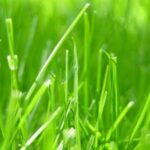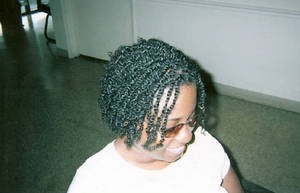Organic gardening can mean different things, depending on what type of gardener you are and what type of indoor garden you’re longing for. The word “organic” and its meaning, as interpreted by the gardener often dictate what type of indoor organic gardening one will have. It sounds a little confusing, so let me explain. According to the Free Dictionary, the definition of “organic” in the sense of gardening reads: “a) of, marked by, or involving the use of fertilizers or pesticides that are strictly of animal or vegetable origin: organic vegetables; an organic farm; b) raised or conducted without the use of drugs, hormones, or synthetic chemicals: organic chicken; organic cattle farming; c) serving organic food: an organic restaurant; d) simple, healthful, and close to nature: an organic lifestyle.”
Therefore, if you are a gardener that interprets “organic” closer to the definition described in (a), chances are, organic to you means 100% pure and you want to start with an organic seed or a plant derived from an organic seed. If you are a gardener that leans toward the definition described in (d), you’re happy with purchasing any plant without concern to whether it’s from an organic source or not, and you are going to grow it in an organic lifestyle, in a most natural state, probably without the use of chemicals. For the sake of the “true organic gardener,” this Beginner’s Guide to Indoor Organic Gardening focuses on indoor organic gardening in its purest form utilizing all of our God-given resources.
There are all types of indoor organic gardens. Basically, anything that grows can be grown indoors organically. Some gardeners like to concentrate on indoor organic houseplants, either blooming or foliage only; sometimes both. Others enjoy the convenience of an indoor organic herb garden and vegetable gardens.
Containers
As long as you have a good source of natural light, you can have an indoor organic garden. Almost any herb and vegetable can be grown indoors in containers. Containers can be anything, such as an empty milk carton, pots, hanging baskets, planters and any other container suitable for the plant and the space available. What’s important is that the container be properly sized according to the size of the plant at maturity.
Soil
Due to the popularity of organic gardening, organic potting soil and compost are available at most garden centers. Use the compost to mix in with the potting soil in order to increase the nutrient value of the soil. One part compost to two or three parts potting soil would be a sufficient combination.
Seeds & Plants
When selecting seeds, if you’re shooting for the purest form of an indoor organic garden be sure the seeds are organic. The same applies to plants, making sure to choose the healthiest ones available.
After you have purchased your seeds and plants, you can begin establishing your indoor organic garden. However, plants need to be given a couple of days indoors before being transplanted into their new containers. This will give them time to acclimate to their new environment, avoiding stress and shock often associated with transplanting, ensuring a healthy start.
Planting & Transplanting
Herbs
Some people plant kitchen herbs as their sole “crop” for their indoor organic garden. Kitchen herbs can be planted as seeds in a window box or pot in the kitchen. Chives will need to be planted in their own separate container. People with windows over their kitchen sink have an ideal place for herbs as they will thrive with the moisture from the sink. Mint varieties also need to be planted in their own separate container as they are very possessive of soil and space.
Once they get started, some herbs grow quicker than you use them. If so, simply trim them often and dry for later use.
Lettuce & Greens
An indoor organic garden isn’t complete without lettuce and greens. Lettuce and greens are quite bountiful and can be planted in most any container. Depending on the species, determines how thick to plant the seeds. As both lettuce and greens begin to grow, you can enjoy them as sprouts or wait until the plant matures.
Bush Beans, Runners & Peas
Because of their size, bush bean varieties need to be planted in containers that are at least eight inches in diameter. These can be planted as seeds or transplanted and do very well with full to moderate, or morning and/or evening light.
Runner beans and pea varieties are beautiful additions to your indoor organic garden when planted in hanging baskets. You won’t have to worry about staking them, let them drape over the sides of the basket. These too, do very well with full to moderate, or morning and/or evening light.
Tomatoes
Tomatoes can be started as seeds, but are most successful when plants are transplanted to your indoor organic garden. Tomatoes, like bush bean varieties, should be planted in pots of no less than eight inches in diameter. The roots of the tomato plant should be covered at least one inch under the soil. By placing a stick along the side of the plant allows for support of tying the plant as it grows. If you wait until the plant needs support to add a stick, you could damage the roots of the tomato plant. Tomatoes do best in full to moderate light and water them as the soil feels dry to the touch.
Zucchini, Squash & Cucumbers
Plant seeds or transplant to hanging baskets. Note that these plants like lots of light, form vines and may cling to their surroundings. These vegetables may seem the hardest to grow indoors, but can be the easiest to grow in an indoor organic garden.
Corn
Growing corn in an indoor organic garden doesn’t have to be challenging, however, it will require a large container. In a very large container, plant seeds scattered around the container and approximately one inch deep. Once you have sprouts, you can thin them to the healthiest three to five plants. Soil should be kept moist, not wet, at all times.
Environment Tips
It is best to avoid direct sunlight for most all plants.
Indoor plants will benefit from outdoor air and sun in a sheltered location a couple of times each year. Setting indoor plants outside in a sheltered location during a mild season for approximately two to three weeks will “revive” them. Once they are returned to their indoor organic garden, give them a dose of organic fertilizer.
The indoor temperature should be relatively constant avoiding extremes or sudden changes in temperature.
Tips to Keep Your Indoor Organic Garden Growing Strong
Remember: do not use chemical pesticides, fungicides, and fertilizers. Use only organic products or homemade solutions for pest control. Homemade solutions include sprays made from baking soda, dishwashing liquid, garlic, or mild soap.
When it comes to light, shoot for four to six hours of sunlight each day. If your windows cannot provide at least four hours a day, purchase some grow lights at a garden center.
When it comes to watering, it’s simple, you don’t want your plants to dry out, and you don’t want them to drown. Keep a container of water available that is room temperature. Using tap water can shock the roots.
Because you have an indoor organic garden, does not mean that you can plant them and forget them. Your plants will require checking on each day. Check for moisture, bugs, or sickness.
If you make your own compost to use, which is highly recommended, do not put any trimmings from sick plants in it, as this will ultimately breed disease.
Source: “Herb Gardening Indoors” by Mary Hanna


